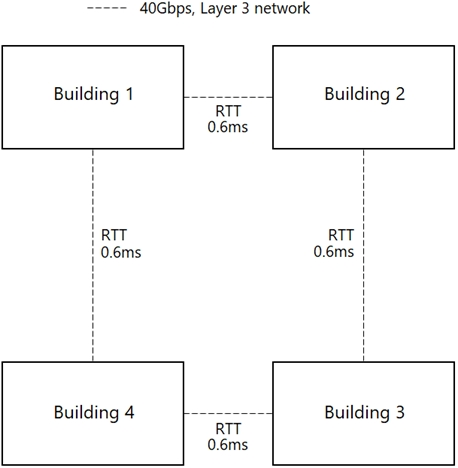Reference the exhibit.

A university campus has a site topology illustrated in the exhibit. Adjacent connected buildings are connected with a single 40gb layer 3 network with a RTT of
0.6ms as depicted by each line. An architect wants to configure a fault domain in each building.
What would the architect need change in order to implement a fully supported vSAN Cluster?